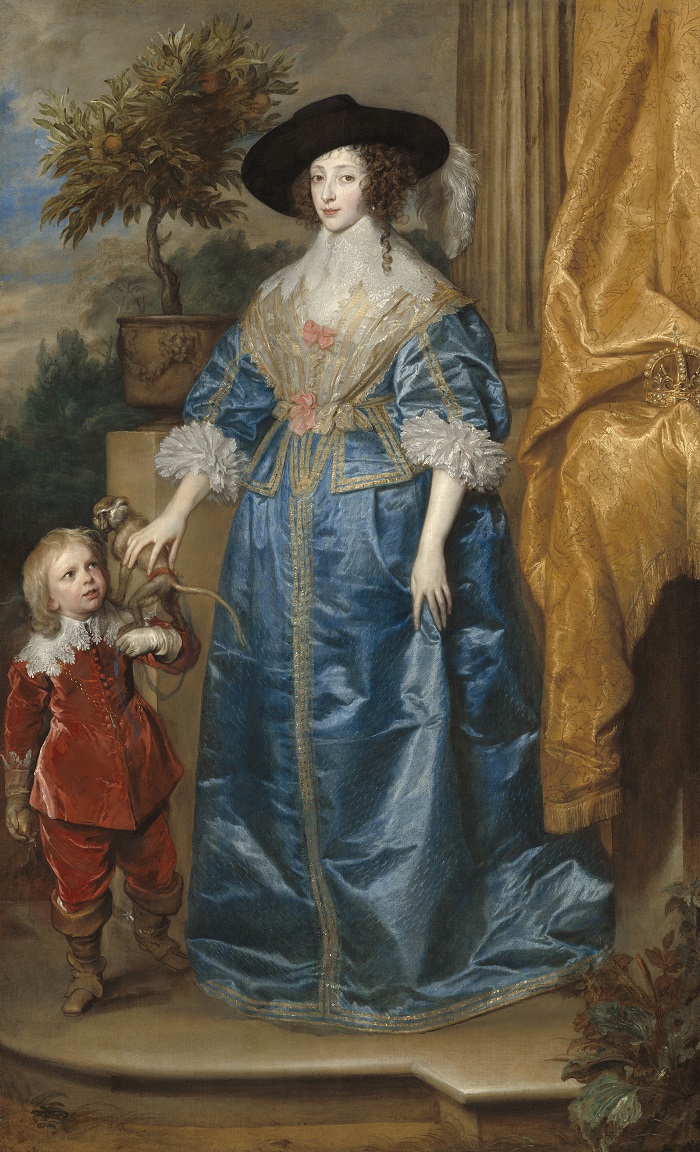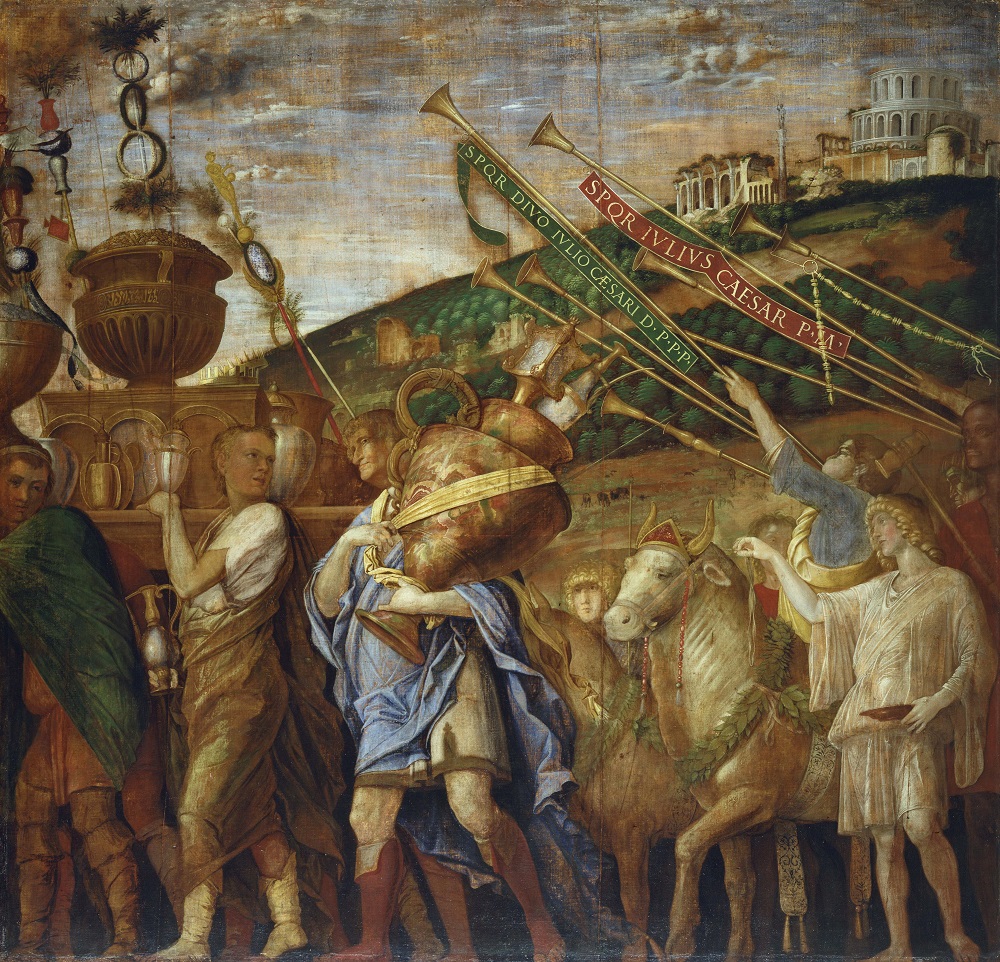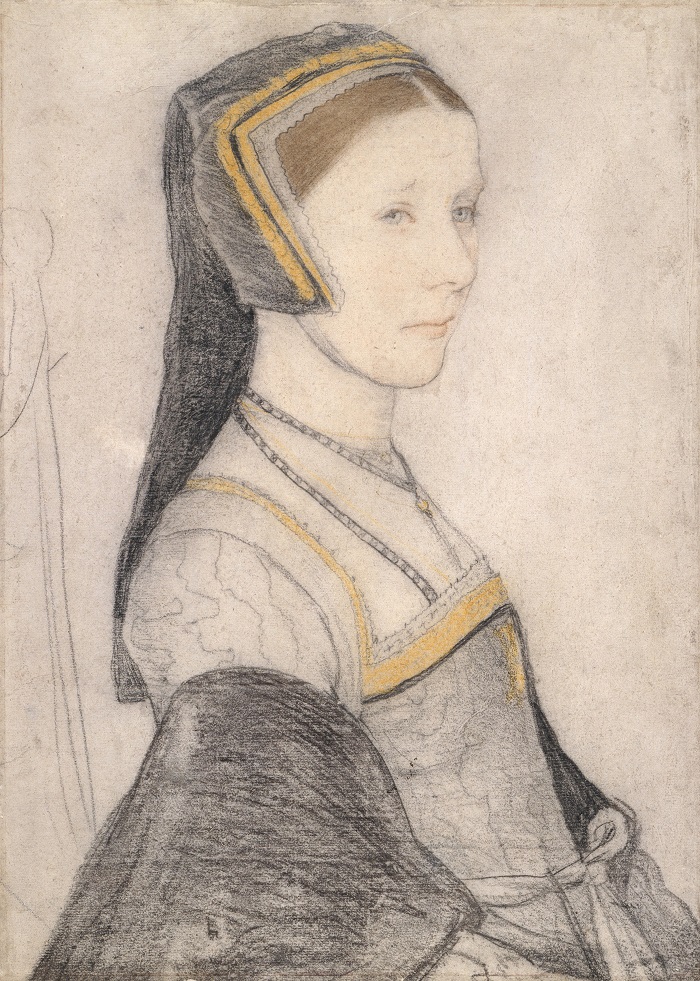Titian! Mantegna! Rubens! Dürer! Veronese! Van Dyck! Raphael! Velazquez! About 140 works which were once part of Charles I’s 2,000-strong collection are reunited in a sumptuous collaboration between the Royal Academy and the Royal Collection. It is a marvellous selection covering the 15th to the 17th centuries, the Northern and Southern Renaissance and the baroque. Charles I may have been a wretched king and politician, but he was an outstanding and original connoisseur collector and commissioner of art. Among the greatest hits exhibitions, there are even surprises: take Rembrandt's early, tender evocation of an old woman, thought to be his mother.
It is a dazzling display of masterpieces which were either inherited, purchased or commissioned both to enhance royal status and be enjoyed on their own merits. Their provenance is well documented thanks In part to Abraham van der Doort’s inventory at the Bodleian in Oxford. The exhibition even reveals not only how much things cost (fuelling the monstrous royal debt) but where much of the work was hung. Every picture – and its history – tells a story.
 The purposes of art in both public and private contexts, and the intertwining of image-making with politics and aesthetics, makes for a potent mix of layered meanings. And an interesting debate is ignited: should we admire the collector as well as the art? Does the passion of Charles, who was a Protestant, for Catholic art cast an attractive light on his character? Does good taste sanitise bad character? He got Van Dyck to create for him a handsome authoritative image – an illusion - and perhaps that underpinned his delusions of grandeur. And the royal ego might even have rubbed off on the artist: Van Dyck's revealing self-portrait shows him wearing a royal gold medal with a huge symbolic sunflower.
The purposes of art in both public and private contexts, and the intertwining of image-making with politics and aesthetics, makes for a potent mix of layered meanings. And an interesting debate is ignited: should we admire the collector as well as the art? Does the passion of Charles, who was a Protestant, for Catholic art cast an attractive light on his character? Does good taste sanitise bad character? He got Van Dyck to create for him a handsome authoritative image – an illusion - and perhaps that underpinned his delusions of grandeur. And the royal ego might even have rubbed off on the artist: Van Dyck's revealing self-portrait shows him wearing a royal gold medal with a huge symbolic sunflower.
Charles was the second son who unexpectedly became first in line when his more talented brother Henry died young. He was puny, slight, unappealing and inadequate, but tenacious in his belief in his divine right to rule. He caught on to art as a way to amplify his pretentions, display his wealth, and burnish his image, even if he was attached to it for its own sake. He must have had quite an eye, evidently fired up by the marvels of the Habsburg collections in Madrid where he was dispatched in 1623 to find a bride to boost England’s political alliances with Europe. Instead he married the French princess Henrietta Maria (pictured above right, Van Dyck's Queen Henrietta Maria with Sir Jeffrey Hudson, 1633 © Courtesy National Gallery of Art, Washington)
He was to bring the Renaissance to a Britain whose Protestant fervour had brought about the destruction of much of the nation’s indigenous artistic heritage. He purchased works from those down on their luck, such as the financially compromised Gonzaga of Mantua, much to the wrath of the Mantuans There is an array of commissioned work from Van Dyck whom Charles made court painter. For the first time since the 17th century the three grand Van Dycks of Charles plus equine companions and courtiers are united in one gallery. They are the visual manifestation of fake news, projecting an image of confident power that was far from the truth. There is also the remarkable tripartite portrait of Charles, done for a Bernini bust which was lost in the great Whitehall fire later in the century.
There is an array of commissioned work from Van Dyck whom Charles made court painter. For the first time since the 17th century the three grand Van Dycks of Charles plus equine companions and courtiers are united in one gallery. They are the visual manifestation of fake news, projecting an image of confident power that was far from the truth. There is also the remarkable tripartite portrait of Charles, done for a Bernini bust which was lost in the great Whitehall fire later in the century.
Rubens, the diplomat and artist knighted by Charles, is here with his visions of great events and allegorical landscapes. It's a coup de théâtre to have all nine canvases of Mantegna’s Triumph of Caesar, better displayed than in their permanent home at Hampton Court. Mesmerisingly detailed, it's one of the most melancholy celebrations of victory ever conceived. (Pictured above: The Vase Bearers, c. 1484-92, Royal Collection Trust / © Her Majesty Queen Elizabeth II 2017)
 There are hypnotic miniatures by Nicholas Hilliard and Isaac Oliver, and his son Peter, and a chance to see in optimum conditions a score of portrait drawings by Holbein, of the notables from the reign of Henry VIII. The phrase "a speaking likeness" could have been invented for them, not to mention Quentin Massys’ portraits of Renaissance humanists, Desiderius Erasmus and Pieter Gillis. (Pictured above left: Hans Holbein the Younger, Anne Cresacre, c. 1527. Royal Collection Trust / © Her Majesty Queen Elizabeth II 2017)
There are hypnotic miniatures by Nicholas Hilliard and Isaac Oliver, and his son Peter, and a chance to see in optimum conditions a score of portrait drawings by Holbein, of the notables from the reign of Henry VIII. The phrase "a speaking likeness" could have been invented for them, not to mention Quentin Massys’ portraits of Renaissance humanists, Desiderius Erasmus and Pieter Gillis. (Pictured above left: Hans Holbein the Younger, Anne Cresacre, c. 1527. Royal Collection Trust / © Her Majesty Queen Elizabeth II 2017)
There was a huge sale of much of the royal collection by the Commonwealth after Charles I’s execution, partly to defray enormous debts. After the Restoration, Charles II was to buy back what he could, but significant holdings were dispersed. So there are loans from European and American museums, private collections and some 16 British collections. Back among their companions, they are making connections in this once-in-a-lifetime exhibition.
- Charles I: King and Collector at the Royal Academy until 15 April
- More visual art reviews on theartsdesk









![SEX MONEY RACE RELIGION [2016] by Gilbert and George. Installation shot of Gilbert & George 21ST CENTURY PICTURES Hayward Gallery](/sites/default/files/styles/thumbnail_125_x_125_/public/mastimages/Gilbert%20%26%20George_%2021ST%20CENTURY%20PICTURES.%20SEX%20MONEY%20RACE%20RELIGION%20%5B2016%5D.%20Photo_%20Mark%20Blower.%20Courtesy%20of%20the%20Gilbert%20%26%20George%20and%20the%20Hayward%20Gallery._0.jpg?itok=3oW-Y84i)





Add comment